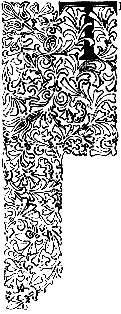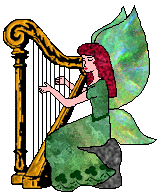Introduction
 oday, the
word Bard conjures many different images. Not only has it been used to describe
Shakespeare and Robert Burns, that same title is also given to the impressively costumed
gentleman who heads the Welsh Eisteddfod. In the remoter parts of the Celtic countries,
people called Bards sing the old songs and some even tell old tales. Occasionally, they
still make songs to commemorate events - such as the aged Hebridean Bard who, not that
long ago, sang of the raising of the first television mast on his island!
oday, the
word Bard conjures many different images. Not only has it been used to describe
Shakespeare and Robert Burns, that same title is also given to the impressively costumed
gentleman who heads the Welsh Eisteddfod. In the remoter parts of the Celtic countries,
people called Bards sing the old songs and some even tell old tales. Occasionally, they
still make songs to commemorate events - such as the aged Hebridean Bard who, not that
long ago, sang of the raising of the first television mast on his island!
If we were to try to find some common ground for these very different people, other
than their shared title, it could only be their lack of similarity to the original Celtic
Bards. The Ollamh, the highest degree of Bard in ancient Gaelic society, belongs to the
Druid class. As such, the nature of his poetry is predominantly religious, being
mainly used in ritual, or certainly in a spiritual context. His main preoccupation is the
perception of what he calls "poetic truth" and its subsequent translation and
refinement into exact statement. The "poetic truth" being, of course, that
mysterious and elusive gift of the Otherworld Goddess, the feminine archetype -
inspiration.
The ability to tame that raw, chaotic force into poetry he sees as coming from the God,
the male archetype. Here we see the eternal principal of creation at work, this time on a
mental/spiritual level, as the inspirational Muse and the fire of discipline unite to give
birth to poetry and music. If the Bard is male, he "wooes the Muse" to use a
well-worn phrase. If she is female, she invokes the Muse from without or within. In
essence, the process is the same.
It could perhaps be said that one of the main functions of the Bard is to promote and
maintain the twilight state so favoured by the Celts. A particular outlook on life that,
indeed, marks one as a Celt. Namely, a belief in the dualistic Otherworld that, although
not often seen, is always felt - inside one's self with the heart and outside with a
prickling of hair on the nape of the neck or a tingling of the spine. This state of
neither one thing nor the other is a very difficult thread to weave through a poem...
"I would not find... For when I find, I know, I shall have claspt the wandering
wind And built a house of snow..."
These words, from the ancient Gaelic poem "From the Hills of Dream", express
well the Bardic ideal - to say something, but to retain mystery. To convey with words and
music an ideal which the mind will understand at one level, but only the spirit will
perceive at another. For the former understanding comes from this world - and the
God...and the latter from the emotive Otherworld - whose essence belongs to the Goddess.
The Bard, therefore, must be more than a musician and storyteller - he must be a messenger
from the Otherworld.
We can see this process working beautifully in the old legends. Rather like the skins
of an onion, it seems that the layers of a Celtic legend are infinite - but so they should
be! For the purposes of explanation, however, they can be broadly split into three - Body,
Mind and Spirit. The body of the legend is the basic story it tells. But, be it of love,
heroism or death, it should always include a part of the Universal Theme - the one great
tale of the seasonal, cyclic relationship between the God and the Goddess. The mind of the
legend will be in code, understandable only to those people who possess the key. Hidden
within this code is the whole Celtic system and how to operate it. But, as Robert Graves
says in his book "The White Goddess" it is well hidden, guarded and disguised.
The spirit of the legend belongs not to this world, for it affects us on a more subtle
level than the words or their musical accompaniment. This level is an unconscious
communing between Bard, listener and the Divine. The Bard is here the unifying, linking
factor between men and Gods... The creation of words and music is obviously only one
aspect of Bardism. Another is the committing to memory of literally hundreds of legends,
poems and harp accompaniments. Although the legends are told in prose style, the Bard
during times of high drama breaks into metred poetry with suitable musical enhancement.
This necessitates the learning of well over one hundred Bardic metres - the "Dan
Direach", all of which have individual poetic significance and therefore application.
Each metre has a title, such as "Rannaigheacht dialtach mhor", or "great
one-syllabled versification" and an explanatory formula.
On a further level, the Bard attributes certain magical qualities to certain musical
notes, and thus it is believed that a particular harp accompaniment will affect the
listener in a certain way. In the legends, it is said that a Bard must be able to play
three (that number again) magical strains on his harp - the Sleep Strain, the Laughter
Strain and the Weeping Strain.
All this, of course, is the intellectual aspect of the craft. A Bard never forgets that
ultimately he answers to the Goddess who reaches far beyond the knowable. And along that
path lies the never-ending, sometimes painful, quest for inspiration and the overwhelming
need to convey the ideal of truth and the spirit of beauty...To enchant and lead the
listener to the Otherworld...
"Through dark trees, speared by thin bright light. Through eyes against which hair
blows. Through gold in a puddle, silver covered by clouds, I have guessed at you in
wakefulness. I have dreamed you in sleep. Words whispered down the wind. Shapes against
the daylight glare. Or shadows, merging with shadows, spreading into night. Where touch is
more real than sight. And the trees are emptiness between the glades..." - Teasgasg
Neamhaidh. (Inspiration - literally, Divine Teaching). To know more about celtic bards
click here.



